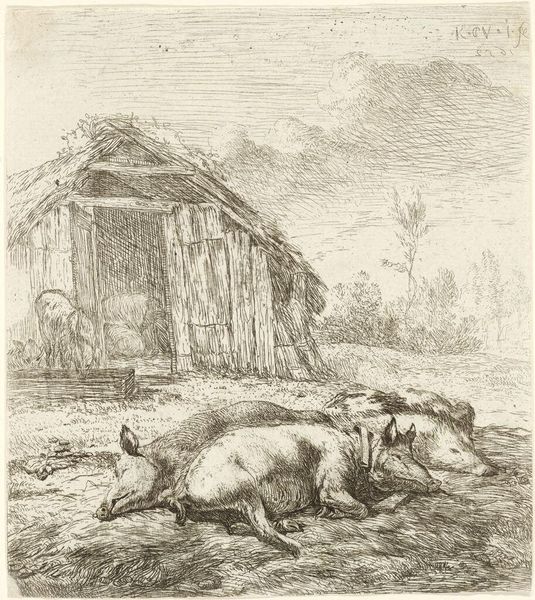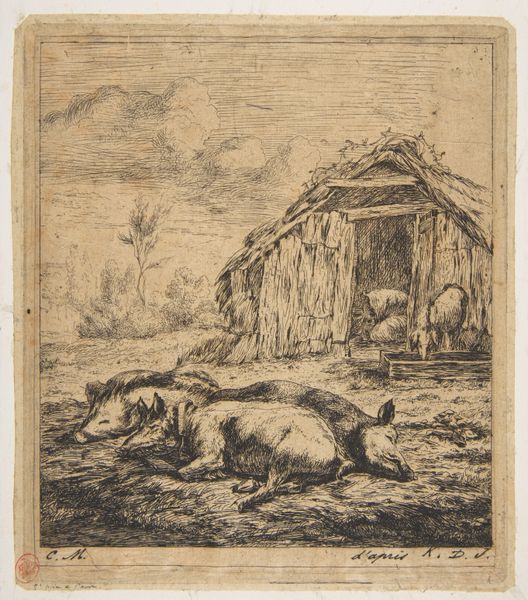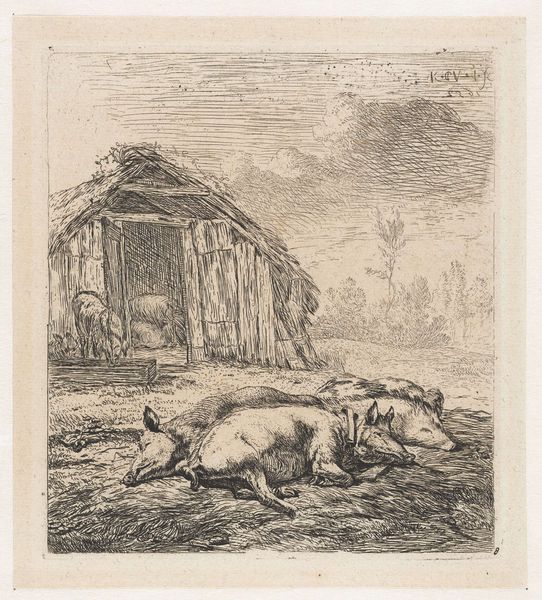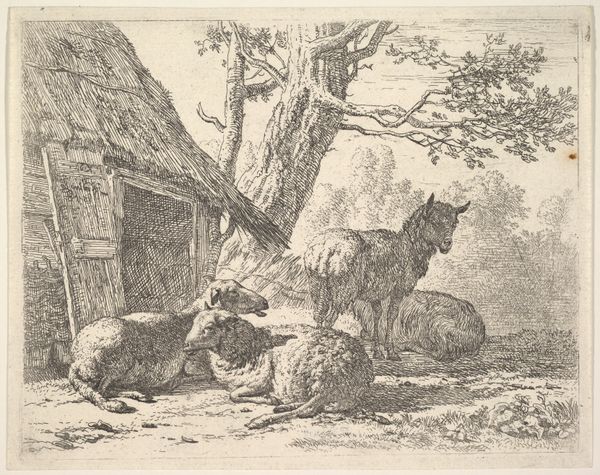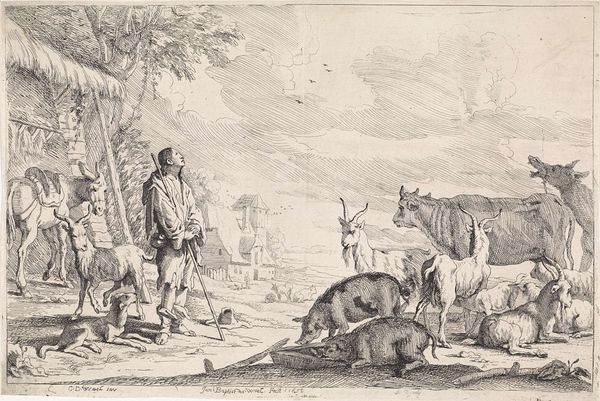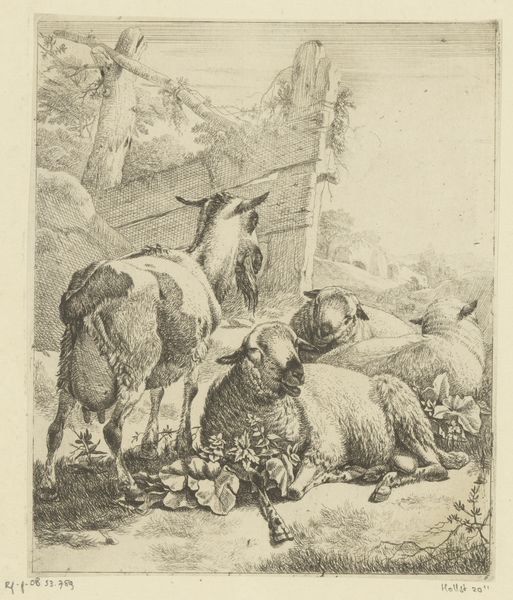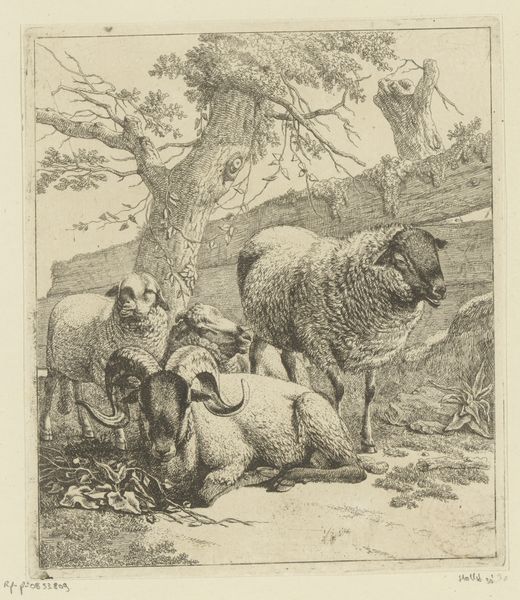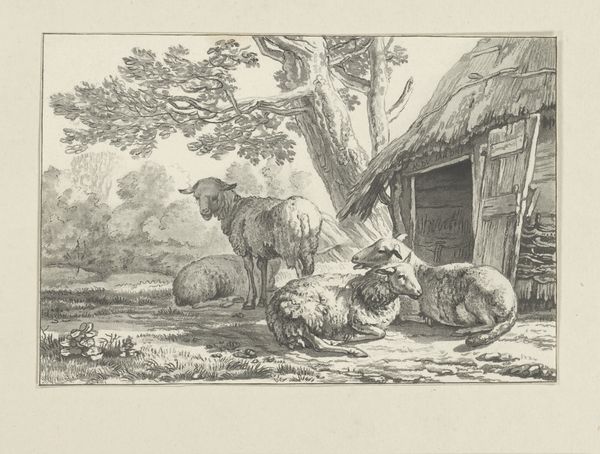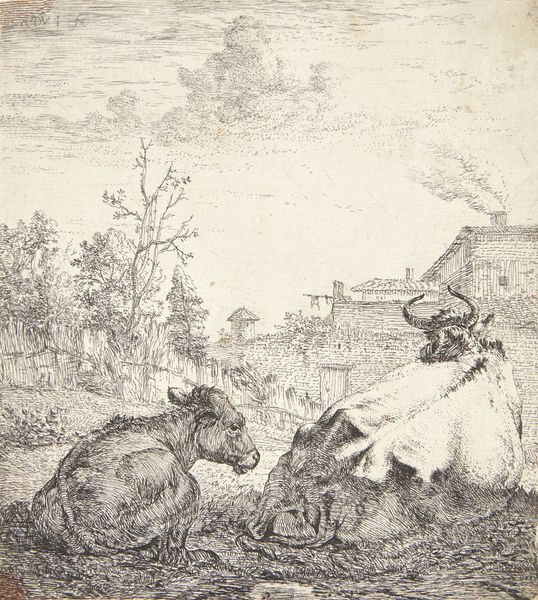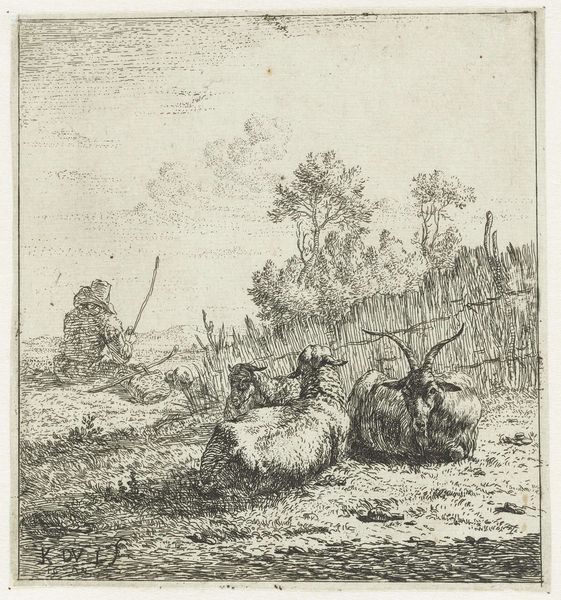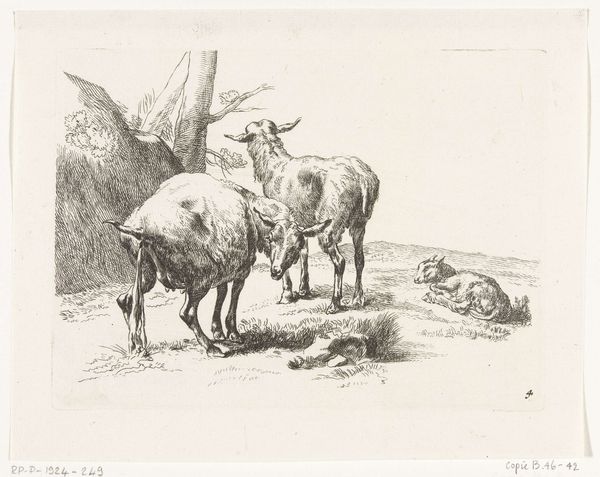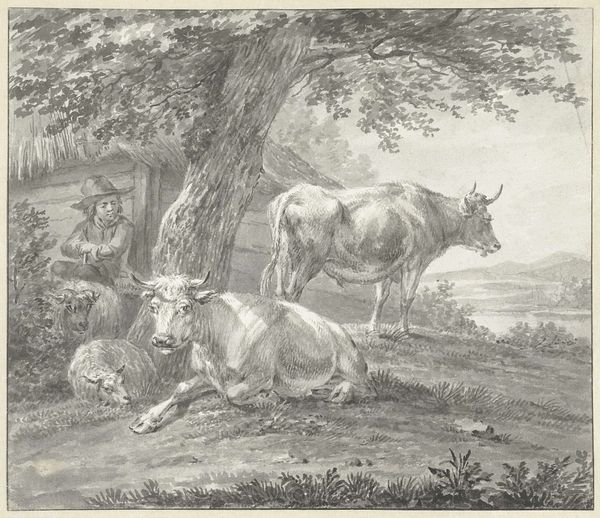
print, etching
#
dutch-golden-age
# print
#
etching
#
landscape
#
genre-painting
Dimensions: 152 mm (height) x 138 mm (width) (plademaal)
Editor: Here we have Karel Du Jardin's etching, "The Three Pigs In Front of The Pigsty" from 1652. The fine lines create such detail, but also this atmosphere of simple, almost rural contentment. What can you tell me about the history surrounding an image like this? Curator: Well, it's intriguing to see genre painting applied to what some might consider a lowly subject. Du Jardin situates these pigs not merely as farm animals, but as subjects worthy of artistic consideration. How do you think this image functions within the broader visual culture of the Dutch Golden Age? Editor: That’s a great question. Perhaps it was part of a movement to ennoble everyday life, or maybe a subtle commentary on wealth and prosperity, linking it back to the land? The pigs almost seem like they're posing, it seems very intentional. Curator: Precisely. This etching was made for the art market, so that wealthy merchants and members of the growing middle class could buy them for display in their homes. We should ask: does portraying humble subjects make it more accessible or more appealing? What values do you think that they projected? Editor: Interesting... maybe displaying prints like this signaled a sense of groundedness or even social awareness amidst increasing wealth? Is that pushing it too far? Curator: Not at all. It's possible it reflects a curated, constructed view of rural life that helped reinforce social hierarchies while feigning connection to the common person. Remember the socio-political power behind these seemingly simple genre scenes. Editor: That completely reframes my understanding. I hadn’t considered that such a calm scene could be entangled in social dynamics like that. Curator: These images acted in service to class and patronage, as always. It gives a fresh urgency to viewing them.
Comments
No comments
Be the first to comment and join the conversation on the ultimate creative platform.
